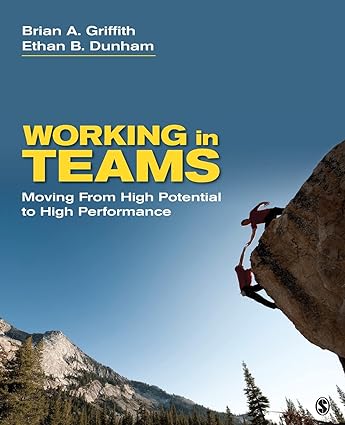Question
Downsizing: Anathema to corporate loyalty? Jim Daniels was unprepared for the dilemma facing Defense Systems, Inc. (DSI). Jim, vice president of human resources for DSI,
Downsizing: Anathema to corporate loyalty? Jim Daniels was unprepared for the dilemma facing Defense Systems, Inc. (DSI). Jim, vice president of human resources for DSI, joined the company one year ago when he was pirated away from one of the company's major competitors. DSI manufacture electronic components used in weapons supplied to the Air Force and many other firms. In addition, DSI makes semiconductors used in many of the weapons systems as well as in personal computers and auto-motive computers. When Jim joined DSI, a major drive to build up the staff in engineering was undertaken in anticipation of a major upturn in the semiconductor market. Unfortunately, industry analysts' projections were optimistic, and the semiconductor market failed to pick up. DSI recently completed an aggressive hiring policy at the major universities around the United States, wherein the company had selected 1,000 engineers who were among the cream of the crop with average GPA 3.4. Without a pickup in business, however, DSI is confronted with some fairly unpleasant alternatives. From one point of view, potential cutbacks at DSI fit the overall pattern of cutbacks, restructuring, and downsizing facing many major US. Companies. The motives among firms who have trimmed their workforces vary- some to please Wall Street and the stockholders, others to keep pace with foreign competitors or to shrink an unwieldy organizational structure. To Jim, the DSI layoffs or terminations are poor alternatives to dealing with a turbulent environment. The major problem, as Jim sees it, is to preserve as many of these jobs as possible until business picks up. To terminate these new hires would irreparably harm DSI's future recruitment efforts. On the other hand, under employing these talented recruits for very long is bound to lead to major dissatisfaction. Although terminations would improve the balance sheet in the short run, Jim worries about the impact of such a move on corporate loyalty, a 3 fragile and rare commodity at other major firms that have had to cut their white-collar workforce. Jim is scheduled to meet with the executive committee of DSI in three days to discuss the over-staffing problems and to generate alternatives. In preparation for this meeting, Jim is trying to draw on his experience with his past employer to generate some ideas. A number of differences between DSI and Jim's old employer, though, make comparisons difficult. For one, DSI does not employ nearly the number of temporaries or student interns as did his old employer. Nor does DSI rely on subcontractors to produce parts needed in tis assembly operation. Because of extra capacity, DSI can currently produce 50 percent of the parts it purchases, whereas Jim's ex-employer could produce only 5 percent. Another major difference is the degree of training provided by DSI. At Jim's old employer, each employee could expect a minimum of 40 hours of additional training a year; at DSI, however, training consists of about 10 hours per year, much of it orientation training. Jim wonders whether there might be some additional ways to remove slack from the system and at the same time preserve as many jobs as possible. For example, overtime hours are still paid to quite a few technicians. Would the engineers be willing to assume some of these duties in the interim until business picked up? Some older employees have accumulated several weeks of unused vacation. Could employees be encouraged to take unpaid leaves of absence? Perhaps early retirement incentives could be offered to make room for some of the bright young engineers. DSI also has 14 other geographic locations, some in need of additional workers. Could a recruiting plan for internal transfers address this problem? As Jim thinks these options, one thing is clear. He needs to organize and prioritize these ideas concisely if he is to be prepared for his upcoming meeting. Source: Managing Human Resources by Susan E. Jackson and Randall S. Schuler, 11th Edition, CENGAGE Learning (2019) End of the case.
Question 2 Explain TWO (2) potential problems for the current class of engineers recruited at DSI? (40 marks)
Step by Step Solution
There are 3 Steps involved in it
Step: 1

Get Instant Access to Expert-Tailored Solutions
See step-by-step solutions with expert insights and AI powered tools for academic success
Step: 2

Step: 3

Ace Your Homework with AI
Get the answers you need in no time with our AI-driven, step-by-step assistance
Get Started


